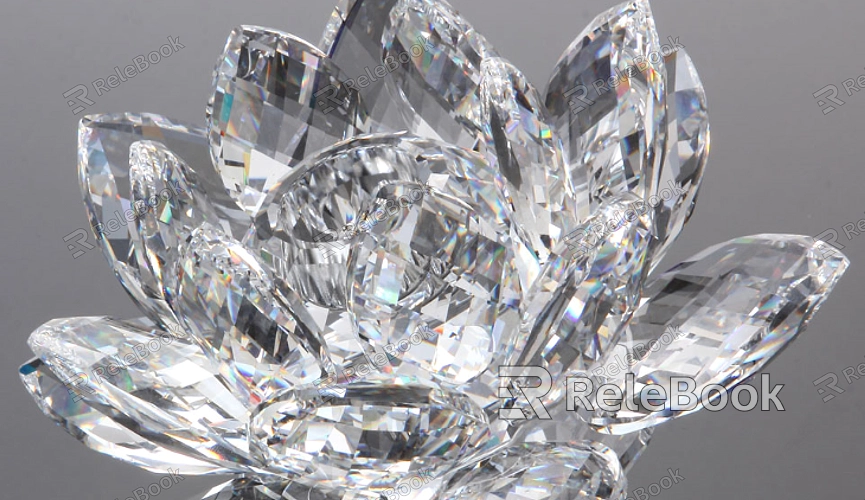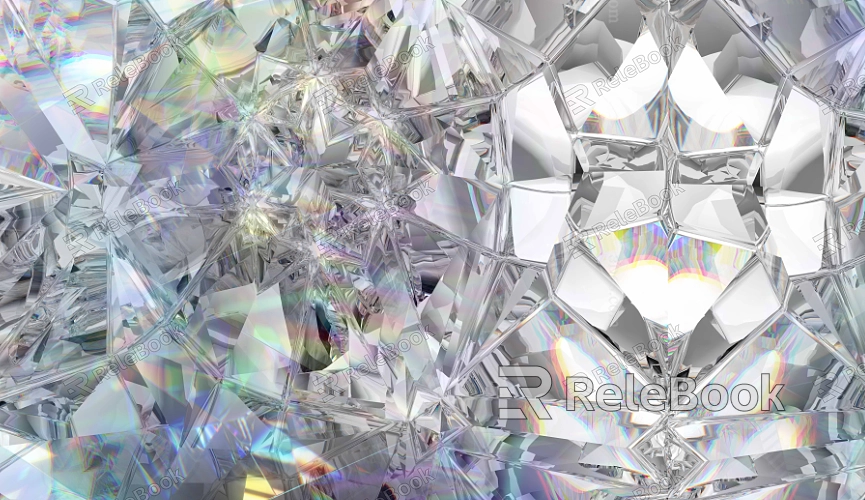Which HDRI Maps Are Best for Diamond Texture Reflections
Given diamonds' highly refractive and reflective nature, achieving a realistic visual effect in virtual scenes requires selecting the right lighting environment. HDRI maps are a crucial tool for enhancing the appearance of diamond textures, as they can simulate natural lighting in 3D software, maximizing the brilliance and transparency of diamonds. This article explores which types of HDRI maps are best suited for diamond texture reflections and provides practical advice for their application.

1. The Importance of HDRI Maps in Diamond Texture Reflections
In 3D rendering, HDRI maps offer realistic lighting effects, which are particularly important for materials with complex reflective properties, like diamonds.
Diverse Lighting Environments: Diamonds are extremely sensitive to their lighting conditions, and different light settings can dramatically impact their final appearance. Choosing the right HDRI map helps designers simulate various lighting environments, enhancing the richness and realism of diamond reflections.
Advantages of High Dynamic Range: HDRI maps capture and reproduce a wide range of lighting details, from the brightest highlights to the darkest shadows. This capability allows diamonds to display intricate reflective details, increasing their overall visual impact.
2. Types of HDRI Maps Suitable for Diamond Texture Reflections
Different HDRI maps produce varying effects on diamond texture reflections. Here are some common and effective types:
Indoor Lighting HDRI: HDRI maps with indoor lighting typically feature softer light sources, which can highlight the subtle reflections in diamonds, making them shimmer under localized light sources. This type of HDRI is particularly suitable for showcasing diamond rings or other jewelry designs.
Natural Light HDRI: HDRI maps that simulate natural lighting, such as daylight, overcast skies, or twilight, can make diamond surfaces reflect light more vividly, showcasing realistic effects under different times of day. For rendering the transparency and dispersion of diamonds, natural light HDRI maps are an ideal choice.
Urban Night Scene HDRI: Urban night scene HDRI maps often include a variety of artificial light sources, such as neon lights and street lamps. These lighting conditions can create dynamic, modern reflections in diamonds, making them perfect for high-end jewelry designs or contemporary projects.

3. How to Choose the Right HDRI Map
When selecting an HDRI map for diamond texture reflections, designers should consider several factors to ensure optimal rendering results.
Resolution: The resolution of an HDRI map directly affects the final output. High-resolution HDRI maps offer finer lighting details, making diamond reflections more lifelike. However, higher resolution also means longer rendering times, so balancing quality and efficiency is key in practical applications.
Lighting Direction: The direction of light in an HDRI map influences how diamond reflections appear. For example, HDRI maps with multiple light sources can create more complex reflections, while a single light direction can emphasize shadows and highlights from a specific angle. Choosing the appropriate light direction based on the design needs can enhance the visual impact of diamonds.
Light Source Color: The color of the light in an HDRI map also affects how diamonds are perceived. Cool-toned light can enhance the icy appearance of diamonds, while warm-toned light adds warmth and softness. By selecting HDRI maps with different color temperatures, designers can precisely control the overall tone and atmosphere of the diamond.
4. Tips for Using HDRI Maps in Cinema 4D
When applying HDRI maps, designers can use the following tips to optimize diamond reflections:
Exposure Adjustment: Proper exposure settings can enhance diamond reflections, avoiding overexposure or underexposure. By adjusting the exposure values of HDRI maps, designers can ensure that diamonds look their best under various lighting conditions.
Light Intensity Control: By controlling the light intensity of HDRI maps, designers can finely tune the brightness and reflectivity of diamond surfaces, making them stand out in the scene. Adjusting intensity in different lighting environments allows diamonds to adapt to a variety of visual styles.
Background Integration: Seamlessly integrating the background with the scene when using HDRI maps can enhance the overall realism. Designers can use the ambient light from HDRI maps to align diamonds with their surroundings, improving the overall visual effect.
Choosing the right HDRI map is essential for enhancing diamond texture reflections. Different types of HDRI maps can simulate a variety of lighting environments, making diamonds appear more vibrant and lifelike. In practice, designers should select HDRI maps with the appropriate resolution, light direction, and color to suit their specific project needs, and master techniques for adjusting exposure and light intensity to achieve the best results in Cinema 4D. If you’re looking for high-quality HDRI map resources, 3D textures, SketchUp models, or 3ds Max models to elevate your designs and virtual scenes, Relebook offers a wide range of options to help you achieve outstanding visual effects in your projects.

